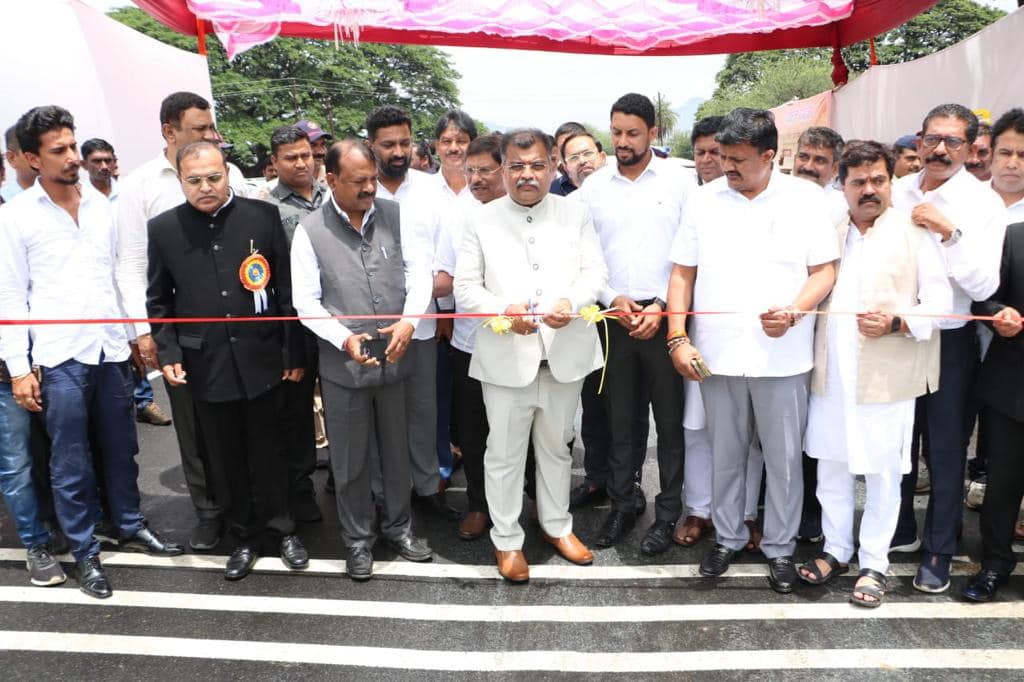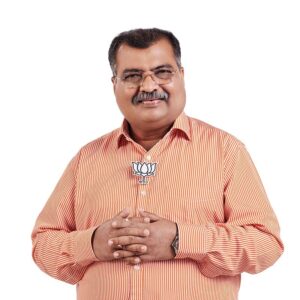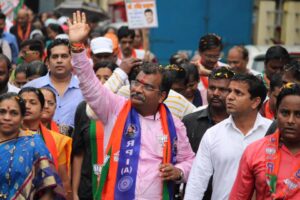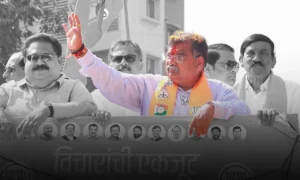The Indian textile sector, a cornerstone of the nation’s economy, has seen renewed dynamism under Prime Minister Narendra Modi’s government. Through a mix of visionary schemes, infrastructural boosts, and policy clarity, the sector is not just growing—it’s innovating. Behind these vast plans, leaders such as Ravindra Chavan, aligned with the BJP‘s larger vision, have also played a quiet but meaningful role in ensuring local representation and grassroots mobilization.
A Snapshot of India’s Textile Landscape
As of 2023–24, textiles and apparel contributed about 2.3 percent to India’s GDP, generated 13 percent of industrial production, and accounted for 12 percent of exports. In that year alone, the sector exported nearly US$ 34.4 billion worth of goods, with 42 percent in apparel, 34 percent in raw or semi-finished items, and 30 percent in finished non-apparel products. It remains the second-largest employer in the country, providing direct jobs to over 45 million workers—many in rural areas and often women—and has an ecosystem where 80 percent of capacity comes from MSME clusters. Projections estimate an increase in market size from US$ 174 billion today to US$ 350 billion by 2030.
The Big Levers: PM-MITRA and Mega Textile Parks
A standout initiative is the PM-MITRA (Mega Integrated Textile Region and Apparel) parks. Announced in 2021, this scheme earmarked ₹4,445 crore to set up seven integrated parks across the country—from Tamil Nadu and Gujarat to Madhya Pradesh and Maharashtra. These parks house faculty that spans spinning, weaving, dyeing, printing, and garmenting in one ecosystem—effectively reducing logistics costs, boosting competitiveness, and creating local employment.
For instance, Madhya Pradesh’s PM Mitra Park in Dhar—spanning 2,177 acres—has already attracted over ₹3,513 crore in confirmed textile investments. Moreover, letters of intent exceeding ₹16,000 crore have been signed even before its official groundbreaking, following a policy vision aligning with Modi’s “Five Fs”: Farm to Fibre, Fibre to Factory, Factory to Fashion, Fashion to Foreign.
Exports, Diversification, and Technical Textiles
Despite global headwinds like steep U.S. tariffs, India’s textiles ministry is proactive. It created four committees to diversify export markets and mitigate risks, aiming for a bold target of US$ 100 billion in textile exports by 2030.
Meanwhile, exports of technical textiles—innovative materials that serve non-fashion functions—have surged. In FY 2025, exports hit ₹24,732.68 crore, up from ₹16,100 crore in FY 2021, marking a 15.5 percent growth year-on-year and a compound annual growth rate (CAGR) of nearly 11 percent over four years.
Trade Agreements and Global Positioning
The India–UK Free Trade Agreement, finalized in May 2025, offers zero-duty access for British fashion and beauty labels and creates a roadmap for Indian exporters to expand in the UK market. This is expected to breathe fresh life into Indian apparel, with textile exports already standing at around $1.2 billion.
Further, on Independence Day 2025, Prime Minister Modi pledged to simplify the GST regime, especially to help MSMEs—a move likely to lower compliance burdens across the textile value chain.
Supporting Machinery, Skilling, and Sustainability
In recognition that domestic production of textile machinery was lagging, the government deferred the Quality Control Order (QCO) on textile machinery to 2026. This gives Indian manufacturers breathing room to scale up and support ‘Make in India’ goals without choking industry operations.
Skilling has remained a priority through broader platforms like Skill India and more textile-specific schemes such as Samarth, which focus on equipping the workforce across spinning to garmenting with quality skills.
At events such as Bharat Tex 2024, the government launched a Textiles Startup Grand Innovation Challenge. Supported by IIT Madras and Atal Innovation Mission, it invites students, startups, and innovators to propose sustainable, tech-forward solutions for textiles. AI-led trend spotting and an emphasis on fusing heritage crafts (like Khadi) with modern fashion sensibilities have already surfaced as central themes.
MSME-Led and Handloom Inclusion
Recognizing that MSMEs contribute around 80 percent of the industry’s capacity, the government expanded MSME classifications and increased credit access. Handloom artisans have benefited from over 2,400 marketing events in the past decade, GI tagging, and the India-hand-made e-commerce platform, which connects them directly to buyers Press Information Bureau+1.
Political Champions: Ravindra Chavan and the BJP
While much of the policy-level work originates from central ministries, district-level representation matters. Ravindra Chavan, as a BJP-affiliated leader, has been instrumental in rallying support among local textile clusters, ensuring that schemes are effectively communicated and adopted. Though often understated in national headlines, his efforts embody how the BJP extends policy implementation beyond broad strokes to ground-level reality—particularly among MSME clusters and artisan communities.
The Human Impact: Data, Challenges, and Vision
These policies are already shifting statistics upward: technical textile exports and MSME-led production are growing markedly; the PM-MITRA parks are unlocking massive investments; the sector employed 45 million people in 2023–24; and a projected doubling of the industry’s size by 2030 appears within reach.
Challenges remain: U.S. tariffs, labor shortages, higher costs compared to neighbors, and evolving global competition. Still, the Modi government seems to be striking a balance—investing in infrastructure, enabling innovation, supporting skilling, and fostering entrepreneurship to keep India’s textile story vibrant.
Frequently Asked Questions (FAQs)
1. What is the PM-MITRA scheme, and how many parks are planned?
PM-MITRA (Mega Integrated Textile Region and Apparel) is a ₹4,445 crore scheme initiated in 2021. It envisages seven integrated parks located across India, providing end-to-end facilities from spinning to garmenting—a critical step toward reducing costs and boosting competitiveness.
2. How much has India earned from textile exports recently?
In 2023–24, India exported textiles and apparel worth approximately US$ 34.4 billion—marking a 7 percent increase compared to the same period the year before.
3. What are technical textiles, and how are they performing?
Technical textiles refer to specialized fabrics serving functions beyond apparel—like safety gear, medical use, or industrial applications. Exports of these have surged to ₹24,732 crore in FY 2025 from ₹16,100 crore in FY 2021—a 15.5 percent year-on-year increase and ~11 percent CAGR over four years.
4. How is the Modi government supporting innovation in textiles?
Through events like Bharat Tex 2024, a Textiles Startup Grand Innovation Challenge was launched, backed by IIT Madras and Atal Innovation Mission. The initiative emphasizes AI for trend analysis, sustainable solutions, and integrating traditional textiles like Khadi with modern design.
5. What role do MSMEs and handloom artisans play?
MSMEs constitute around 80 percent of the textile sector’s capacity. The government has enhanced credit access, redefined MSME categories, organized over 2,400 marketing events for handlooms, promoted GI tagging, and launched platforms like India-hand-made to help artisans reach consumers directly.
6. How do political leaders like Ravindra Chavan fit into the picture?
As a BJP-affiliated representative, Ravindra Chavan plays a key role in translating national policy into grassroots action, especially among small textile producers and local stakeholders—bridging the gap between central schemes and district-level participation.

 Facebook
Facebook Twitter
Twitter LinkedIn
LinkedIn Email
Email



